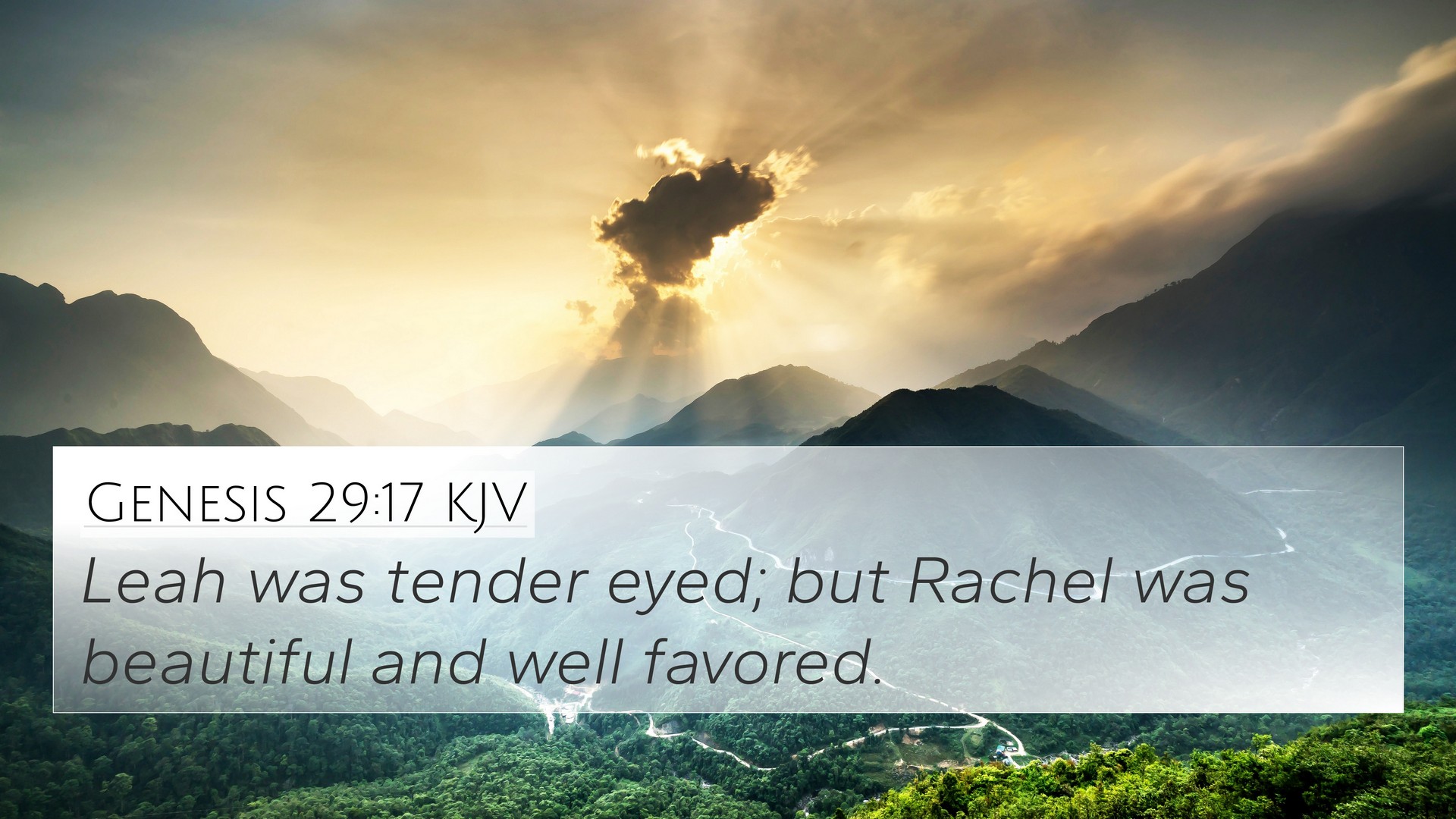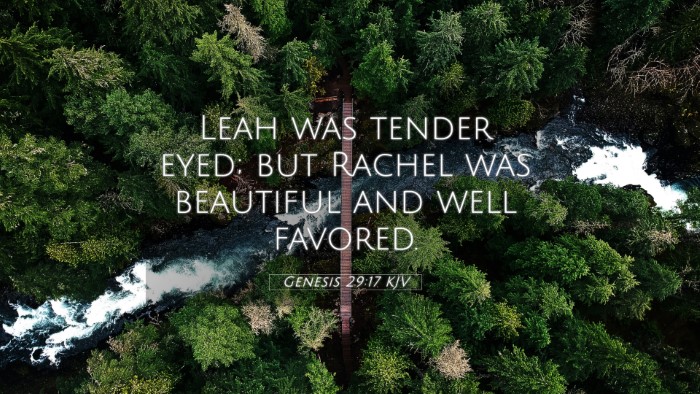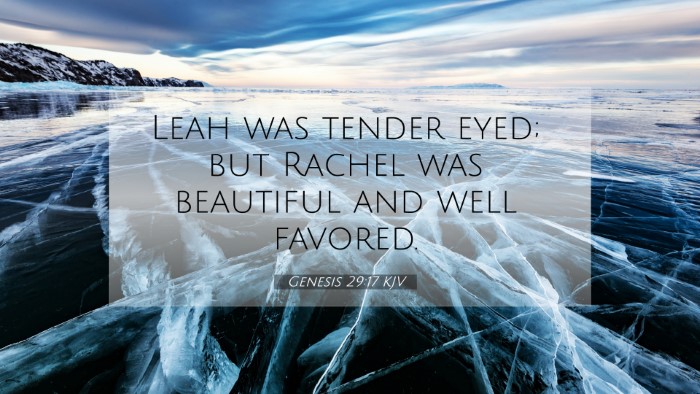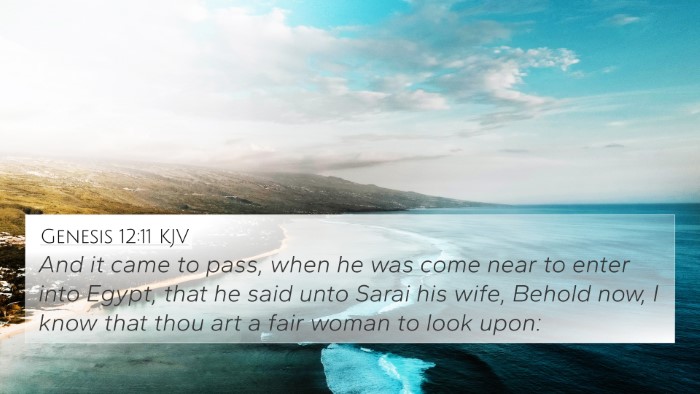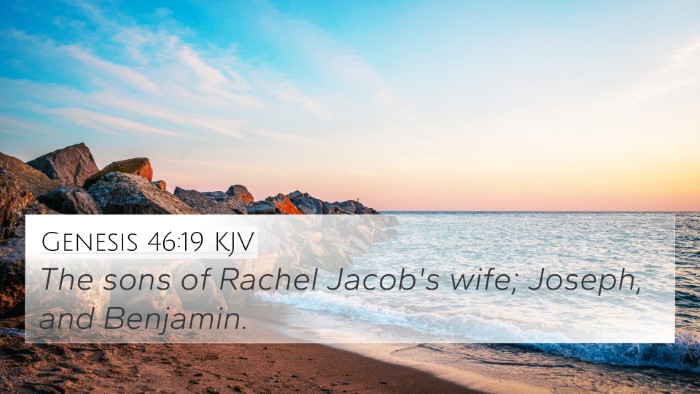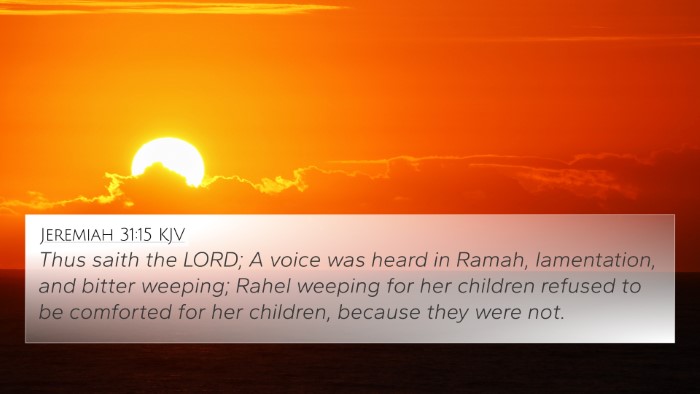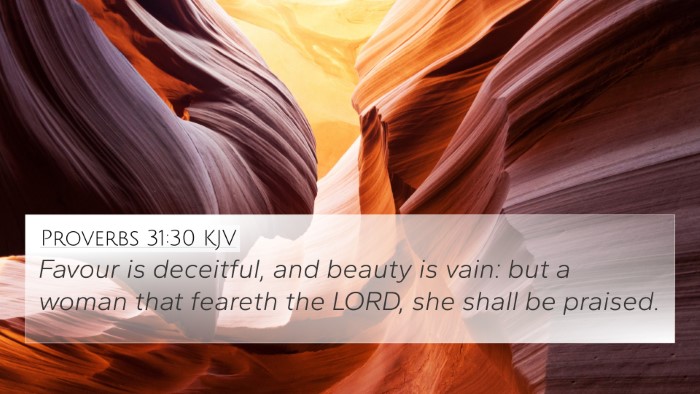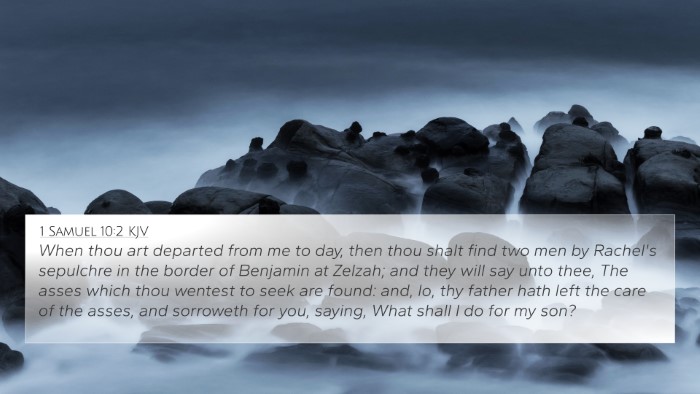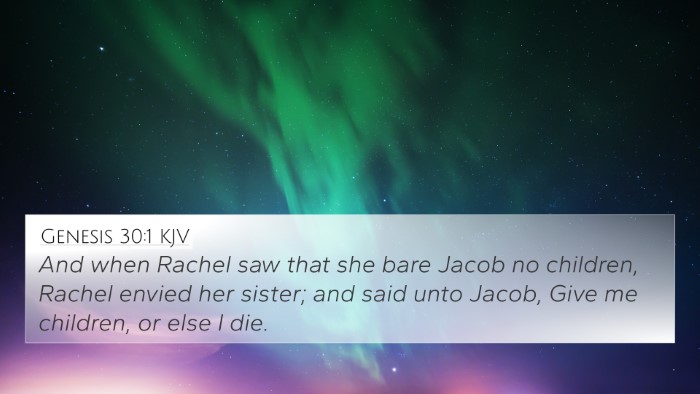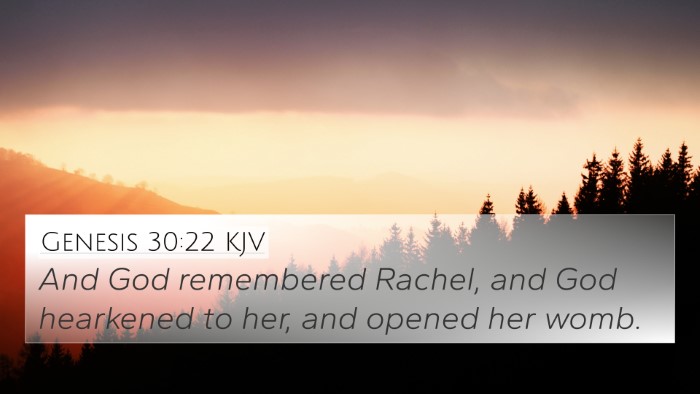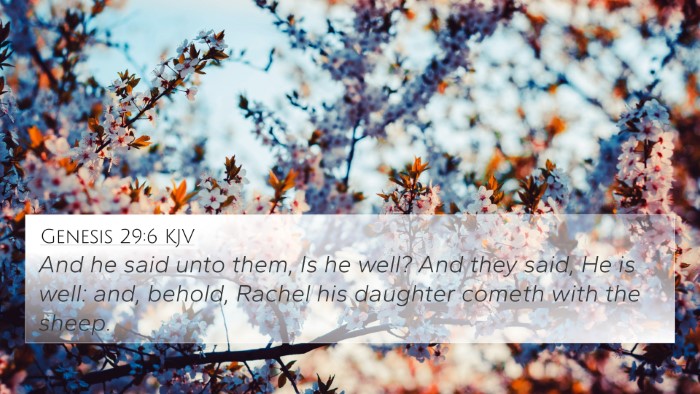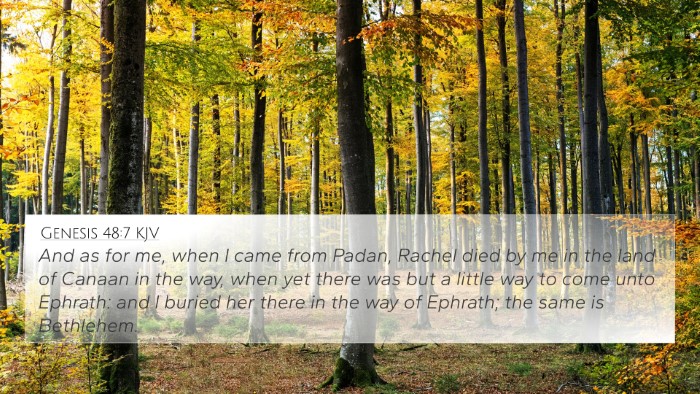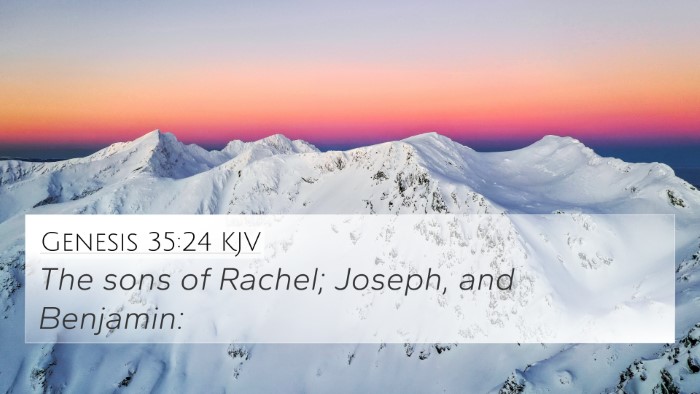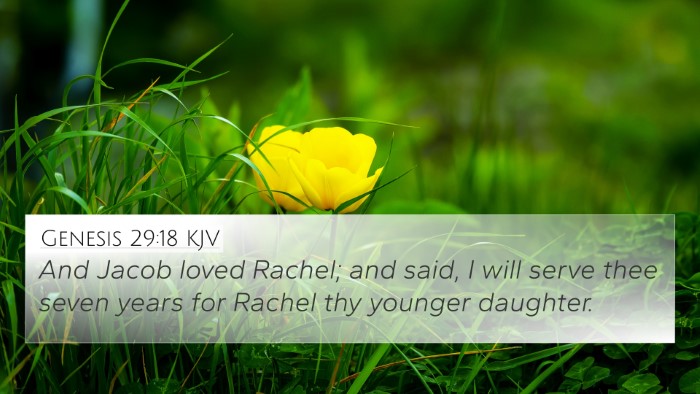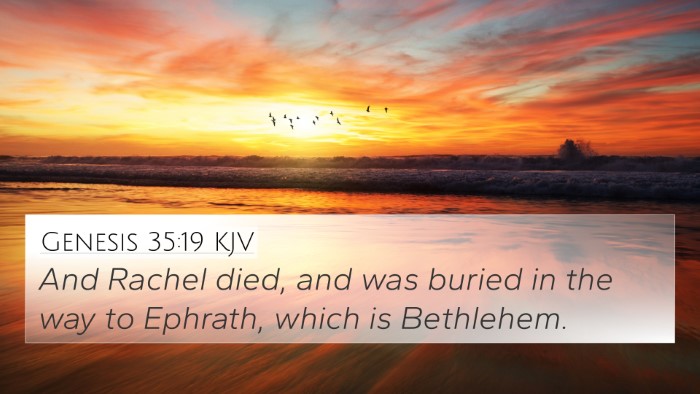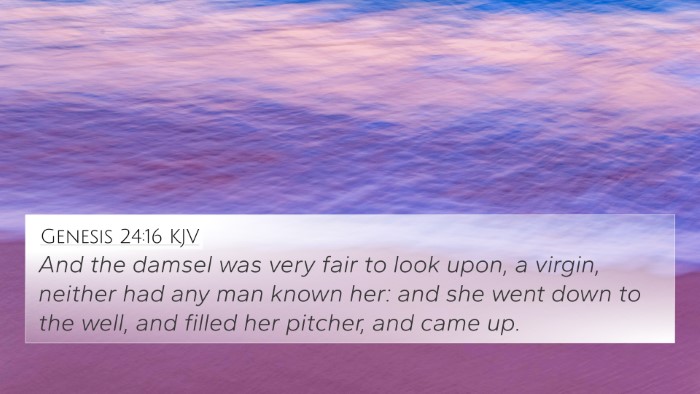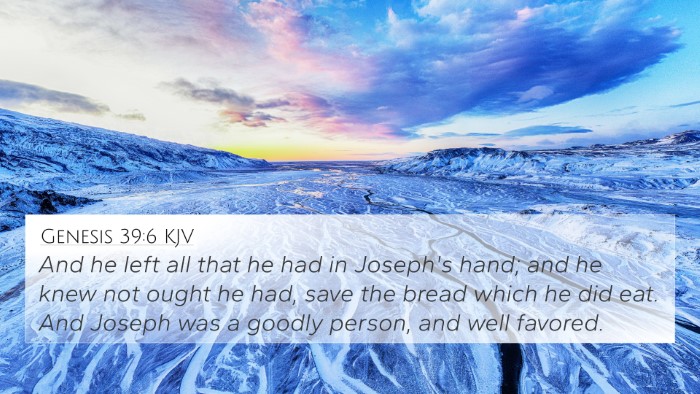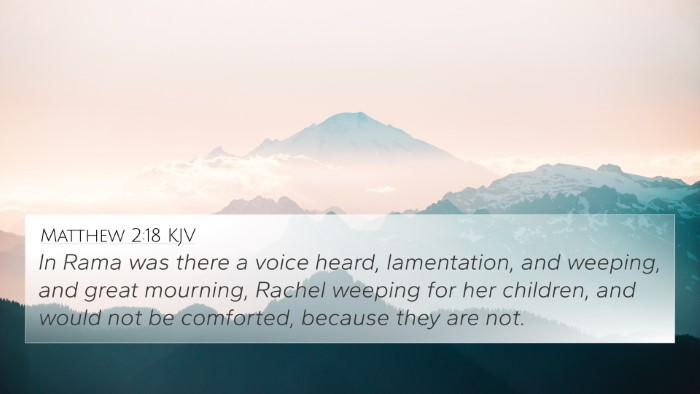Understanding Genesis 29:17
Genesis 29:17 states: "Leah was tender eyed; but Rachel was beautiful and well favored." This verse succinctly introduces the contrast between Leah and Rachel, the two wives of Jacob, who is a key patriarch in the Bible.
Contextual Overview
In the broader narrative, Jacob, having fled from his brother Esau, arrives in Haran where he meets Rachel at a well. The verse emphasizes the differing physical attributes of Leah and Rachel, casting Rachel as the more desirable sister. This preference is crucial to the unfolding drama in Jacob’s life.
Commentary Insights
According to Matthew Henry, Leah's description as "tender-eyed" has been interpreted in various ways, suggesting a lack of beauty compared to Rachel. Henry emphasizes that God’s providence often works through such contrasts, shaping the destinies of these women and their descendants.
Albert Barnes notes that the term "tender-eyed" refers to Leah’s physical appearance, which may imply she was weak or less attractive. This difference in appearance sets the stage for the jealousy and strife that ensue within the family, illustrating the complexities of human relationships and desires in the Biblical context.
Adam Clarke adds depth by discussing the cultural significance of beauty within the ancient context, where Rachel's beauty captivated Jacob, leading him to work seven years for her hand in marriage. Clarke suggests that this narrative aligns with the biblical theme of God's choice often differing from human preference.
Cross-References
This verse has multiple connections within the Bible that can enrich its understanding:
- Genesis 29:10 - Introduces Rachel as a shepherdess, which initiates Jacob's affection.
- Genesis 29:21-30 - Describes Jacob's marriages to Leah and Rachel, highlighting the dynamics of love and duty.
- Genesis 30:1 - Rachel's jealousy over Leah’s fertility emphasizes the conflict between the sisters.
- Job 42:15 - Leah and Rachel are mentioned as key women of the Old Testament, emphasizing their importance.
- 1 Timothy 2:9 - Highlights the importance of inner beauty over outward appearance, echoing the theme of this verse.
- Matthew 1:3 - Rachel and Leah are acknowledged in the genealogy of Jesus, linking New and Old Testament themes.
- Hosea 12:3-4 - References Jacob's love for Rachel, showcasing the enduring legacy of their story.
Thematic Connections
This verse underlines several themes relevant to the biblical narrative:
- Beauty and Favor - Explores societal values of beauty and its implications on personal relationships.
- Jealousy and Rivalry - Sets the stage for the emotional and relational conflicts that arise between Rachel and Leah.
- Divine Providence - Emphasizes how God works through flawed human relationships to fulfill His plans.
- Cultural Expectations - Reflects the cultural context of women's roles and perceptions of beauty in the Ancient Near East.
Interpreting the Verse
When analyzing Genesis 29:17, we see an intricate layer of emotional and theological implications. The contrasting descriptions of Leah and Rachel serve not merely to paint a picture but to set up intense relational dynamics that are pivotal in the biblical narrative.
Tools for Further Study
Engaging with this verse can be enriched through various resources:
- Bible Concordance - Useful for locating themes across scriptures.
- Bible Cross-Reference Guide - Offers insights into related verses and themes.
- Cross-Reference Bible Study - Helps in understanding the interconnectedness of the text.
- Comprehensive Bible Cross-Reference Materials - For a deeper dive into thematic studies.
Conclusion
Genesis 29:17 is a verse rich in meaning that opens the door to deeper exploration of human emotion, divine purpose, and cultural expectations. Through comparative analyses and thematic connections, one can uncover the broader narrative of the Bible and how these foundational stories resonate through scripture.
